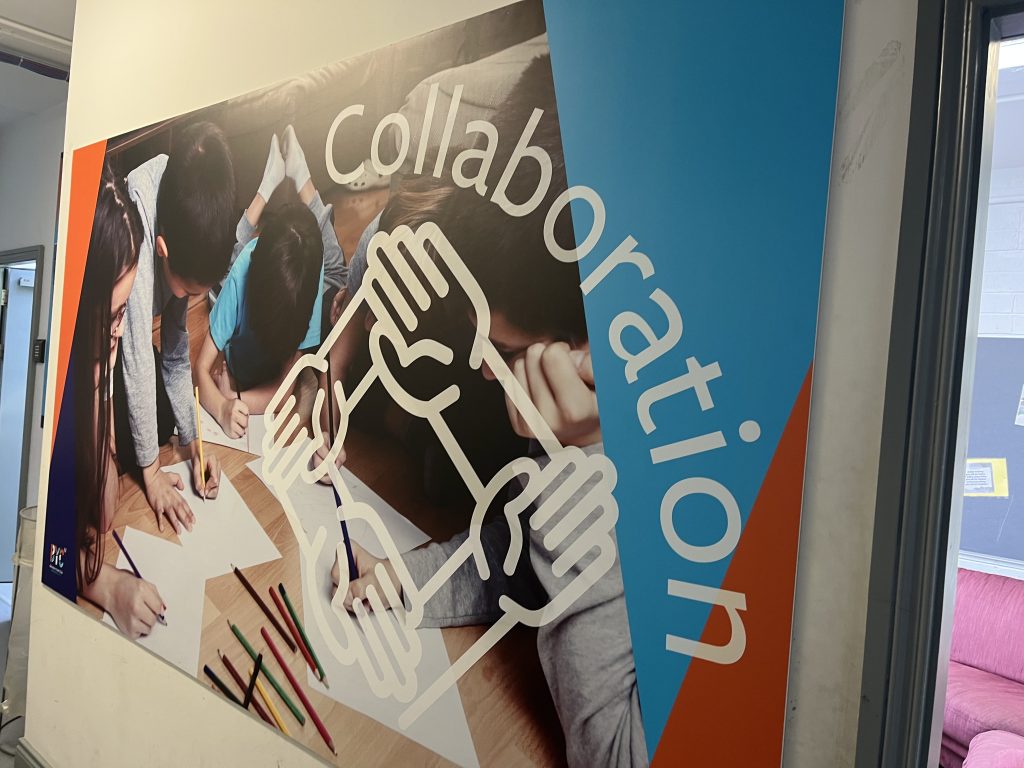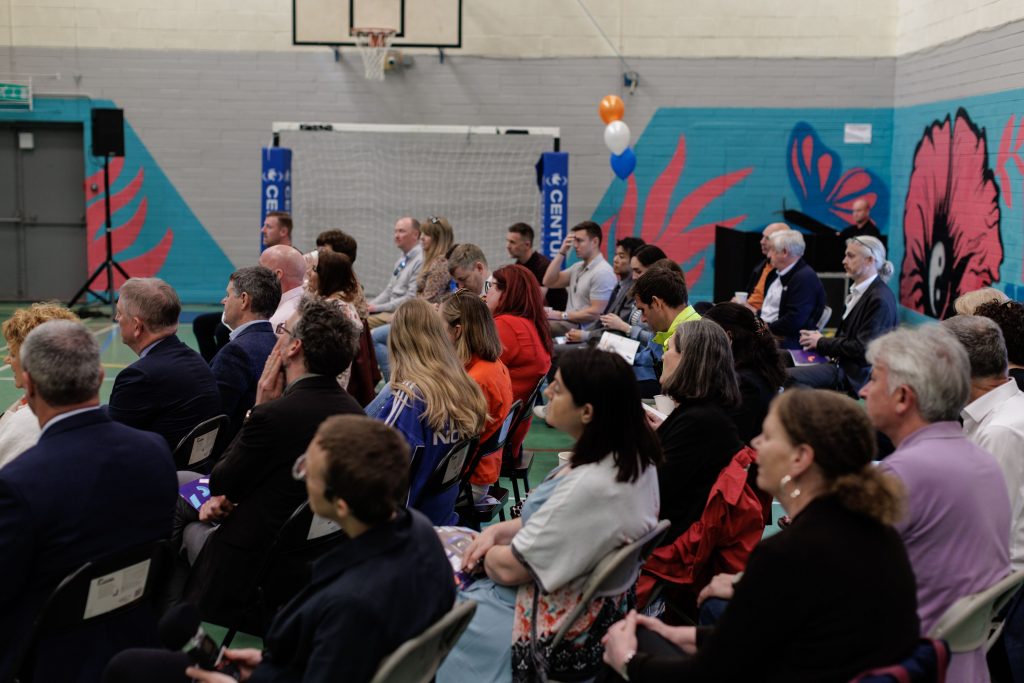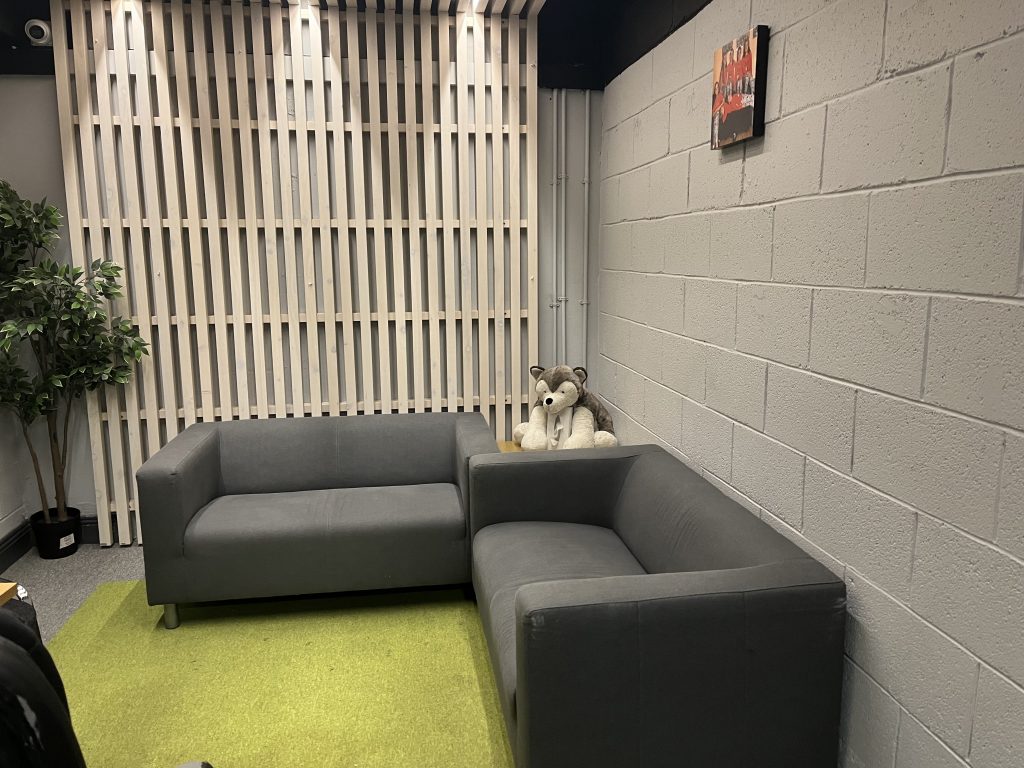All BYC staff and board members underwent Restorative Practice training in 2021 and 2022.
RP training
Most of the staff was trained by the coordinator during the first phase of the implementation. As it was in the middle of the pandemic, the training took place online – some team members found it more challenging to engage with online material than in person. Three staff members had been trained at the National College of Ireland a few years before. James, the coordinator, followed the Childhood Development Initiative’s approach to training. Both have a similar structure. They consist of two levels of training and a training of trainer.
The first level focuses on the restorative mindset and one-to-one interventions: how a practitioner can start introducing RP in their work, using restorative language, having restorative conversations, understanding what it means to be fair and developing emotional intelligence.
The second level is a facilitation course: it teaches practitioners how to facilitate restorative processes, circles, meetings and formal conferences.
All the staff did at least the first level and learned to facilitate basic restorative circles. According to testimonies from the staff, there are the main takeaways:
– Many consider they were unconsciously restorative, and the training helped them raise awareness and make their practice consistent.
– It gave them a better structure to breathe life into the youth work values.
– It raised their confidence.
– It gave them a framework to improve their teamwork. For example, many acknowledge the notion of fairness could be blurry. The training taught them about the 3 E’s of fairness, Engagement, Explanation and clarity of Expectations. It helped in making practice in the team more consistent.
 Despite undertaking training together, the staff acknowledged that they understood the restorative approach and ethos differently. In the end, that was probably the most difficult to achieve: agree on what it means to be restorative when dealing with challenging behaviours. There was not always a consensus, and it took time for the team to agree on what was “restorative” and what wasn’t. We developed this in our article on the buy-in.
Despite undertaking training together, the staff acknowledged that they understood the restorative approach and ethos differently. In the end, that was probably the most difficult to achieve: agree on what it means to be restorative when dealing with challenging behaviours. There was not always a consensus, and it took time for the team to agree on what was “restorative” and what wasn’t. We developed this in our article on the buy-in.
Some recognise that there may be a difference in approach between what the coordinator promoted and what is demonstrated in other training: James insisted on RP being a philosophy and a way of living, while other pieces of training may emphasise that RP is a set of tools. This also shows the importance of practice after training. A “train and hope” approach with no support for trainees afterwards may not lead to the planned outcomes, and it is essential to set up a Community of Practices as soon as possible.
Lastly, it is important to build a team of champions who will eventually train as a trainer and can have some leadership in the team. Dean and Denise took this role and underwent additional training. They now run the Community of Practices and liaise with management or consultants for all things RP.
Training board members and stakeholders
All board members went through an introduction to RP. The main challenge was to find the time to do it. The coordinator met with each of them and tailored the introduction to their needs so they could do it during their free time.
Then, most stakeholders were made aware of what RP was about. As reported in a previous article, even the main Funders in SMBC Aviation Capital learnt about RP and acknowledged it positively impacted their ways of working. Introductions to RP took different forms, from guided tours of the club to one-page documents to parents, 2hours introductory sessions, or posts on Social Media.

Trauma-informed care training
During the first year of implementation, the coordinator noticed resistance to taking a restorative approach to deal with challenging behaviours when in-person work resumed. When young people were becoming difficult, too often, there was the temptation to send them home and have a discussion the following day. On the other end, when an incident occurred and a restorative approach was trialled, young people were not regulated enough to engage in the process, leading the staff to think the restorative approach was not helping.
After talking to the team numerous times and realising the level of Adverse Childhood Experiences everyone in the club has been through, he thought more training in trauma-informed practice was needed. This approach aims to increase practitioners’ awareness of trauma’s impact on people’s skills, emotions, thoughts and behaviours. Participants learn about the effect of trauma on the brain, how traumatised people can be triggered and how to support them in regulating their emotions. At the same time, it is an opportunity for practitioners to think about their own triggers and ways of regulating themselves. The training was delivered by Susan Kavanagh, an expert in the area, over a period of a few weeks.

The training has proven beneficial. Youth workers recognised it was enlightening and increased their awareness in various ways. Some may have been introduced to some elements of trauma-informed care in College but not at the depth of this training. It invited them not to react immediately when something happened: they started to identify better when young people could not engage positively and had to find ways of regulating their emotions. The building has a cosy small room dedicated to quiet and calm times where young people can be invited when necessary. They also recognise better their own triggers and see their empathy, listening skills and curiosity towards adversarial opinions improving. Some staff members found the theoretical part a bit difficult to grasp. Overall, it was also a bonding experience for the team, as it took place in person once a week over a few weeks. Taking part together and dealing with such serious and meaningful topics was an opportunity to increase trust in the team.

